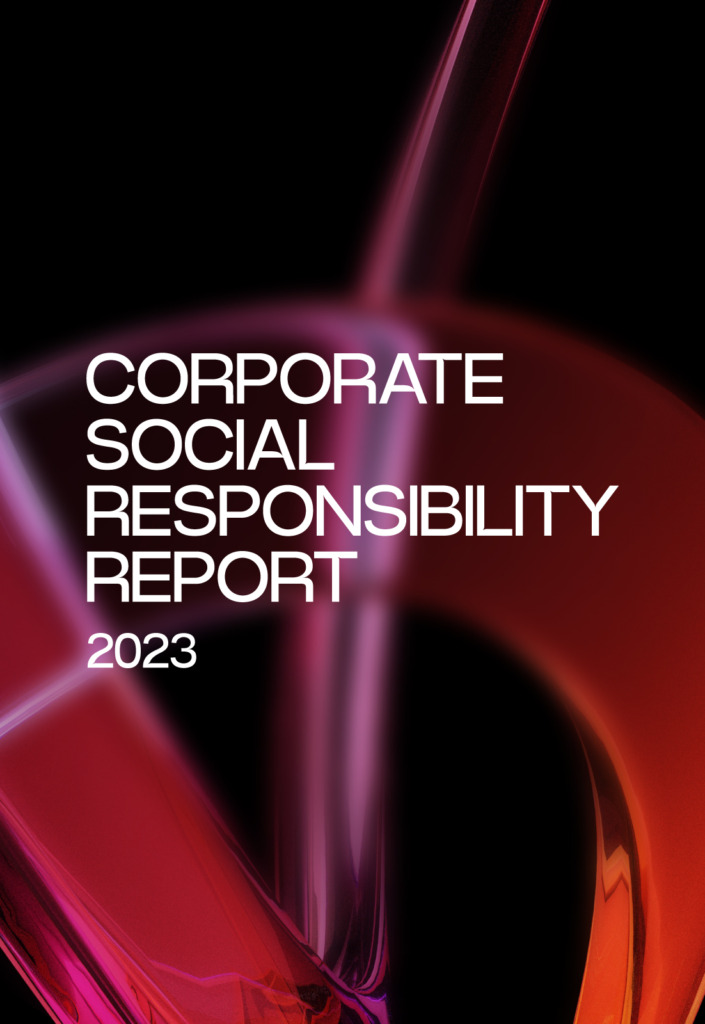
Updated on May 30, 2022
The environment of any given business world is volatile, uncertain, ambiguous, and fast-changing these days. Under the constant challenge of automating the basic transportation processes to perform efficient deliveries, a transportation management system provides flexible, scalable, standardized transportation processes management across the whole supply chain.
With the introduction of a TMS, business owners obtain possibilities to save delivery time, decrease freight expenses, improve warehouse efficiency, eliminate product dispatching risks, and, hence, gain both supply chain efficiency and customer satisfaction.
Logisticstitans.com analyzed the TMS market, revealing that it will reach $6.63 billion by 2026 in comparison with $2.45 billion in 2019. Innovecs shares not only updated tech facts concerning the automation of your logistics processes, but can contribute the empowering of your business top-edge transportation management for better revenues.
In both 2020 and 2021, Statista conducted online surveys asking approximately 1,000 people across the United State the following question: Which of the following activities were part of your shopping behavior over the past six months? The answer: “same-day shipping” topped the list. Check the percentage below:

Living in the fast pace of the modern world, more people are turning to same-day delivery, whether at online or offline stores. It has become the norm to receive packages in 1-2 days, but any slower is now perceived as poor service.
How do retailers manage to ship everything so fast without any damage to packages? What helps Amazon ship the average order in 1-2 hours with its Prime Now service? How does Dolly deliver bulky items in one day?
The shift from traditional transportation and logistics processes to digitalization has substantially impacted the way companies deliver. A Transportation Management System (TMS) is a solution that increases control over deliveries and helps companies ship quickly and securely; making consumers happy.
Let’s shed some light on how transportation management is able to perform an overall change of your digitized supply chain, optimize loads and routes as well as assist in reaching the top company fleet efficiency.
Logistics industry leaders noted that national budgets had given a major boost to the supply chain sector. They welcomed the budgets for railway development, supporting the initiatives for “swifter movement of things across the countries.” This is one of the reasons shipping companies are embracing the evolution of transportation technology and its inherent benefits. Let’s see how it’s evolving and what’s changing.
In India chairman and managing director of “Gateway Distriparks”, Prem Kishan Gupta, reports:
The goal of most transportation companies is to provide fast, flexible, and secure services that increase the level of consumer satisfaction. Keeping pace with technological innovations is one of the methods for achieving this goal. In recent years, the transportation sector has seen a lot of changes, and here are some of the most significant.
Cloud Adoption
Cloud computing boosts digitalization of the transportation processes and promotes:
- Faster and more agile delivery services
- Improved visibility over transportation
- More effective collaboration between shippers, carriers, brokers, and end-customers
Let’s take a look at a now famous case study. Pfizer, a globally recognized pharmaceutical and biotechnology corporation, needed to increase their throughput for deliveries and become more responsive to unexpected events. Moving 500 suppliers to a cloud-based digital network helped Pfizer to scale more quickly, increase network visibility, and better prepare for “planned” emergencies.
They say cloud adoption enabled them to “land products into portions of the world where before we and the rest of the industry were flying blind.”
ELD/GPS Tracking
Cutting insurance and fuel costs while providing quality services to customers is critical in transportation. Tracking solutions empowered by ELD/GPS devices help to:
- Manage fleets more effectively
- Optimize shipping assets and resources
- Build the most convenient and fastest routes
- Ensure driver safety
- Minimize theft risks (anti-theft GPS)
Delivery By Drones
Amazon delivered their first packages by drone in the UK in 2016 under its Prime Air program, offering 30-min delivery. This was the first drone delivery in the world and the impetus for other companies to progress and expand their delivery methods.
As of 2021, the world has seen subsequent drone deliveries:
- COVID vaccines: Zipline, a drone manufacturer, delivered vaccines to Rwanda, Ghana, and India (11,000 doses).
- Organ transportation: Workhorse Group and Airspace Link demonstrated delivery of 3D-printed kidneys (10-minute, 2.8-mile).
- Meal delivery: El Pollo Loco, a quick-service restaurant chain, has started testing chicken and rice delivery by drones.
Drone deliveries are fast! For example, Manna, a drone delivery company performs up to 3,000 daily flights. Their suitcase-sized drones can deliver orders within an average of 3 minutes. Which human courier could do that?
E-commerce is also rising and driving the need for Omnichannel distribution. McKinsey’s research shows that omnichannel distribution will grow by 7% annually, approaching $840 billion by 2025. This is 30% more than in 2019.

The classic Omnichannel model, meaning sales through different internal channels, has already been used by retailers for many years. In 2021, it has evolved in Omnichannel 2.0, which means expanding to third-party marketplaces like Etsy, Amazon, and Zalando as new external channels.
Physical stores keep closing. According to BusinessInsider, over 8,000 brick-and-mortars closed in the US in 2020, and we can expect 10,000 more closures in 2021. BestBuy, Disney, and Macy’s plan to close some of their stores this year. These trends require brands to digitally transform and delegate sales and the shipment of their goods to third-party providers who already have trust and loyalty among their customers.
McKinsey provides a detailed explanation of Omnichannel 2.0 and the placement of customers and providers:

Forbes reports that there are 1.8 million EVs registered in the US as of 2020 for business transportation needs. A Transit Value Index report revealed 52% of the US respondents, among transportation leaders, express that their local agents would perform “more sustainable practices.”
Micromobility and “green” transportation are reported to have great power in filling transportation gaps. E-scooters and e-bikes have become a common phenomenon on the roads of the cities and perform micromobility services for the sake of “ same day” delivery concept to gain more business sustainability.
The dynamics of the industry push carriers and shippers to automate processes and make transportation fast, smooth, and more visible. The integration of a TMS helps achieve this—whether it’s your internal solution or you are using 3PL providers.
What is a transportation management system? It is a part of your supply chain in the context of transportation operations. TMS software arranges, executes, and tracks shipments, performing several functions:
- Moving freight by all modes (by ocean vessel, train, truck, or plane—in bulk, palletized, or parcels)
- Search for both internal shipping assets and external service providers to deliver goods
- Arranging inbound and outbound shipments both domestically and internationally
Organizations use TMS software to arrange freight movements quickly and efficiently. These logistics solutions manage commodity sourcing, transport planning, and transaction settlements. Using these types of specialized software contributes to a company’s visibility across all transport modes.
The TMS of the “now and future” is considerably different from the old legacy systems. A new generation of systems provide the following:
- Services are provided through cloud and subscription-based providers (SaaS). Cloud and SaaS solutions make transportation management systems more user-friendly, cost-effective, and affordable for small and medium companies.
- Services are provided through the cloud and subscription-based providers (SaaS). Cloud and SaaS solutions make transportation management systems more user-friendly, cost-effective, and affordable for small and medium companies. Hence, in 2019, G2 reported a 15% growth in TMS usage by SMB.
- Freight is visible wherever it is on the land, ocean, or in the air. Most B2B applications have a tracking feature.
- Uber-like options allow shippers, drivers, and carriers to provide deliveries with the best rates on the market. This new open market helps drivers and carriers handle freight easily (spot-market purchases, immediate delivery of goods, last-mile shipments, and moving commodities from transportation hubs to the end-user delivery).
- Immediate ROI starts from day-1 of TMS installation. Thanks to the expanded integration capabilities of modern applications, the software is more flexible and adaptive to business workflows (containing manual data, web services, ERP, and APIs). So companies invest in the software platform, can implement it quickly (a.k.a. “Nail it & Scale it”), and has vast possibilities to tune it to their business needs.
GEFCO, the European leader in automotive logistics, states that by using a TMS, enterprises are building a “supply chain control tower to obtain real-time visibility from end to end.”

Modern TMS features are a part of the supply chain management process. DHL reports that this technology is available in the planning and delivery process, even for small and midsize companies with annual freight costs of ~$15 Million.
Organizations can integrate a TMS system into either an ERP or WMS for single or multimodal shipments and can obtain pooled-destination capabilities. However, there are other “must-have” features (either in the cloud or private server) including:
- Carrier contacts management
- Load planning to understand the best way to load trucks – in bulk, parcels, stacks, or packages
- Route optimization, carrier selection, and analytics for freight management
- Real-time tracking (e.g., Abivin Route with carrier information and GPS updates)
- Contract management capabilities (modern systems contain customizable feature descriptions, such as location, zone, and effective date)
- Integration with ERP, WMS, or OMS software platforms
- Reporting and business intelligence options (logistics KPI data for tracking trends)
- Security: essential statistics must be available for authorized users including system access
In addition to these basic features, businesses need international logistics functions such as a multi-language interface, the capability to manage commercial invoices, SEDs (shipper’s export destination), NAFTA paperwork, VAT, and cross-border taxes calculations. These automated features can make it much easier to manage international trade delivery operations.
Logistics software solutions are not as complicated as they may seem. It can be an “add-on or plug-in” application ready to be integrated into your website, even if you have no particular expertise in running it. Once you choose the basic features, they can ease the delivery process, save money, balance supply and demand, and optimize operational workflow.
A TMS provides savings by reducing freight delivery costs, improving operational processes, preventing time and money losses with proper analytics, and increasing customer satisfaction thanks to high-quality service levels.

Before uncovering the benefits, take a look at the following statistics:
- After TMS integration, 30% of companies identify an increase in customer satisfaction (AP News Logility Report).
- About 36% of the respondents admit to a more balanced supply and demand model via predictive warehouse analytics (SupplyChain 24/7).
- Participants saw a time reduction in freight invoice payments (Cerasis).
We can explain these figures by the value that an integrated transportation management system brings to your business by enabling:
- Comparing and choosing the best prices of carriers in the market
- Automated shipments booking
- Tracking your deliveries and enhancing supply chain visibility
- Improving freight shipment efficiency
- Operational cost reductions
- Warehouse efficiency after the software is integrated into your ERP (save time on inventory records and commodity entries)
- Gaining customer satisfaction by using real-time analytics that allows you to track on-time delivery and choose only those providers with 100% accuracy for your next deliveries
- Improving cash flow by combining different routes and types of vehicles, choosing shared containers for shipping, or the best last-mile deals
Companies can substantially decrease their manual work by gaining all these benefits. As a result, there are fewer errors in operations such as incorrect billing and invoicing.
Pooled distribution is another valuable possibility enabled by system integration. It allows you to choose the shipments to be picked up or delivered, and at the same time, split the complex orders and process them separately.
The concept of “repeat business” becomes a reality once automated delivery processes contribute to improved customer satisfaction.
Transportation Management Systems (TMS) are not new technology. However, more companies are building efficient systems to integrate the software into their processes to gain business value. Let’s describe some successful and popular examples.
DHL uses TMS software developed by CargoWise, a provider of a cloud-based software platform for logistics management. CargoWise enables accessibility to data in real time, increased visibility over processes, and global transparency.
DHL addressed TMS integration quite seriously. The goal was to ensure it would be smooth and that all employees would be able to easily use it. By integrating this platform, DHL achieved higher quality customer service ratings thanks to consistent delivery. CEO of DHL Global Forwarding & Freight, Tim Scharwath, commented:
CargoWise also played a significant role in the latest DHL achievement of launching their myDHLi, a new platform for freight forwarding.
Argo Consulting included a case on its website describing how they supported one of their clients in choosing a TMS provider. Argo’s client, a wire and cable manufacturer, had non-standard and non-centralized delivery processes causing high freight expenses. Their client was willing to collaborate more with carriers, choose better deals faster, and integrate with their ERP/WMS systems.
Argo advised on order entry and processing and recommended that vendors must have real-time visible reports to monitor weekly KPIs. The opportunity to manage LTL (less-than-truckload) carriers was the main challenge to overcome, and once successful, it resulted in $1.75 million in annual savings.
Companies must be able to oversee the management of:
- Order entries
- Paper workflow to process entries
- Bidding with carriers
- Choosing the best deals
- Applying last-mile outbound delivery
- LTL options to make shipments faster while keeping expenses low
“The best delivery modes for the lowest price” is a brief definition of a transportation management system. It saves you money by minimizing paperwork, allowing you to track freight effectively, increase customer satisfaction with on-time deliveries, optimize routes, and perform inbound and outbound pooled deliveries.
In this article, we have discussed the following:
- The transportation industry is changing with new technologies such as cloud, ELD/GPS tracking, drones, Omnichannel 2.0, and transportation management systems.
- The features of transportation management systems: contract management, real-time tracking, invoices management, route optimizations, and more.
- The benefits and opportunities that a transportation management system opens up for companies include visibility, cost reduction, minimization of manual work, fast deliveries, and happy customers.
Innovecs specializes in developing robust transportation systems for companies across the globe. We are flexible in cooperating with our clients and provide balanced teams with a natural culture fit. Reach out to us if you need any assistance with designing and building your next transportation software platform.




